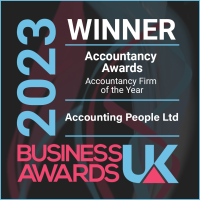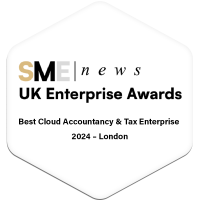Everything sole traders and self-employed individuals need to know about Making Tax Digital for Income Tax.
What’s Changing?
From 6 April 2026, the Making Tax Digital (MTD) rules will extend to Income Tax. If you’re a sole trader or landlord with an annual income above £50,000, you’ll need to be fully signed up before this date.
While VAT-registered sole traders may already be familiar with MTD, those new to the system will need to adopt HMRC-recognised cloud accounting software to stay compliant with MTD for Income Tax (MTD for IT).
What MTD Means for the Self-Employed
If your total income from self-employment or property is more than £50,000, you’ll need compatible software in place before the April 2026 deadline, when the first phase of MTD for Income Tax begins.
Further phases will follow:
- From April 2027, those earning over £30,000 must comply
- From April 2028, those earning over £20,000 must follow the rules
Under MTD, you’ll no longer file tax returns directly through the HMRC website. Instead, you’ll:
- Keep digital records
- Submit quarterly updates using compatible software
- File a Final Declaration by 31 January each year, reporting all additional taxable income
A Quick Recap on VAT and MTD
Since April 2019, MTD has been mandatory for VAT-registered businesses with turnover above £85,000. From April 2022, all VAT-registered businesses must now use digital record-keeping and submit VAT returns through MTD-compatible software.
As of 1 April 2024, the VAT registration threshold has increased to £90,000. If your earnings exceed this, you must register for VAT — and HMRC will automatically enrol you in MTD for VAT.
Benefits of MTD for Income Tax
If the switch to digital feels daunting, you’re not alone, but there are real advantages to getting on board early:
- Fewer errors
Automating data entry reduces manual input and human error. Software can automatically populate your quarterly updates, saving time and improving accuracy.
- Smarter tax planning
Each quarterly update gives you a clearer picture of your tax liability. That means better cash flow management and no last-minute surprises.
- Simplified bookkeeping
While you’ll report more often, each update is lighter in detail — turning a stressful annual task into a manageable monthly or quarterly routine.
You don’t have to wait until the 2026 deadline to benefit from these advantages. Adopting cloud-based accounting software now can offer better visibility into your finances, easier record-keeping, and reduced risk of mistakes.
When Does MTD for IT Begin?
- April 2026: Income above £50,000
- April 2027: Income above £30,000
- April 2028: Income above £20,000
Originally scheduled for 2024, MTD for IT was delayed to 6 April 2026 due to Basis Period Reform. Everyone affected will now share this digital start date.
Who Needs to Go Digital?
If you meet the income thresholds, you must comply with MTD for IT, unless you are digitally exempt. This includes:
- Individuals with disabilities
- Those living in remote areas
- Foster carers
- People unable to obtain a National Insurance number
If you’re under the threshold, you can continue using HMRC’s current Self-Assessment system for now.
Keep in mind: If you operate multiple businesses, HMRC will consider your total combined income when applying the threshold.
How to Sign Up for MTD for IT
If you earn income from self-employment or property, you may need to follow Making Tax Digital for Income Tax (MTD for ITSA). This is HMRC’s new system designed to simplify and digitalise how income is reported and managed.
Before signing up, you must have MTD-compatible software in place. This software is required to keep digital records and submit your income updates to HMRC. it’s a core part of how MTD works.
Once your software is set up, you can sign up for MTD through HMRC’s online service using your Government Gateway account. You don’t register through the software itself, but you’ll need it ready to complete the process and remain compliant.
Before you begin, make sure you have the following information to hand:
- Your full name and date of birth
- Your National Insurance number
- Details of your self-employment and/or property income
- The start date of your business or property income (if it began within the last two years)
- Your accounting method (e.g. cash basis or traditional accounting)
To register:
- Visit GOV.UK
- Log in with your Government Gateway user ID and password
- Follow the on-screen steps to complete your registration
During the process, you’ll confirm the type of income you receive, the year you’re starting MTD, and confirm that you’re using compatible software. If you’re not, HMRC will advise you to return once your software is ready.
Once you’ve completed the steps, you’ll get confirmation that your sign-up was successful.
What You Need to Submit
From 6 April 2026, if you earn over £50,000, you must submit:
- Quarterly Updates
Include all business income and expenditure. These are cumulative, meaning you can update past information as needed.
- Final Declaration
This includes all remaining taxable income, such as interest from savings or investment earnings.
Can My Accountant Handle This?
Yes. Your accountant or bookkeeper can register you for MTD for IT and file updates and declarations using your software.
Always confirm with your adviser whether they offer full MTD support, especially if you’re working with a bookkeeper.
If you don’t have an accountant yet we can offer you a free consultation on MTD.
How to Calculate Your Income
Add together all business and property income. For example:
If you earn £35,000 from freelance work and £20,000 from rental property, you’ll cross the £50,000 threshold and must comply with MTD for IT.
This rule continues for future thresholds in 2027 (£30,000) and 2028 (£20,000).
Can You Opt Out?
If your income is above the £50,000 threshold for Making Tax Digital (MTD), you’ll be required to comply with MTD for Income Tax from 2026—it’s no longer optional.
However, some individuals may be exempt from these digital requirements. This includes people who are elderly, have a disability, or live in areas with limited internet access. Others, such as foster carers or those unable to obtain a National Insurance number, may also qualify for an exemption.
If you believe you fall into one of these categories, you may not need to follow the MTD rules.
Choosing the Right MTD Software
You’ll need HMRC-recognised software to:
- Keep digital records
- Submit quarterly updates and annual declarations
Look for features like:
- Built-in invoicing
- Receipt capture
- User-friendly interfaces to reduce admin time
1. Does MTD for Income Tax replace Self Assessment completely?
No — it changes how you report income under Self Assessment, not the system itself. You’ll still fall under the Self Assessment regime, but instead of filing one tax return annually, you’ll send quarterly updates and a final declaration through MTD software.
2. Will I still need to pay tax in January and July under MTD?
Yes. MTD changes how you report income, not when you pay your tax. Payment deadlines for Income Tax — including the 31 January and 31 July payments on account — remain the same, unless HMRC introduces changes in the future.
3. Do I need separate software for each business if I have more than one?
No. If your software supports multiple income sources or businesses, you can manage everything in one place. Just ensure it allows for separate record-keeping and reporting for each business.
4. What if my income fluctuates and I dip below the threshold?
If your income falls below the threshold for a full tax year, you may no longer need to comply with MTD. However, you should not opt out mid-year — HMRC will assess eligibility annually based on total income.
5. Is there a penalty if I miss a quarterly update?
Yes. HMRC will apply a new points-based penalty system. Missing a quarterly update will earn you a penalty point. After a certain number of points (usually 4), a financial penalty applies. Points expire over time if you remain compliant.
6. Is there a trial or pilot scheme for MTD for Income Tax?
Yes. HMRC is currently running a voluntary pilot. If you’re eligible, you can join early and get used to digital reporting before it becomes mandatory. This is ideal for those who want to test the system and software in advance.
7. What happens if I don’t have MTD-compatible software by the deadline?
You’ll be non-compliant and may face penalties. HMRC requires that all income reporting under MTD for ITSA be done via recognised software — manual entry or use of HMRC’s portal will no longer be permitted.
8. Is Making Tax Digital free?
MTD itself is free, but the software you use is not. Some providers offer free plans with limited features, but most robust MTD-compatible solutions require a monthly subscription. Your accountant may include software access in their fees.
9. Can I still use my accountant if I sign up for MTD?
Absolutely. In fact, many people rely on their accountant to manage MTD obligations. Just ensure your accountant or bookkeeper uses compatible software and is fully aware of your income sources.
10. Can You Use Spreadsheets?
Technically yes, via bridging software — a method used during early MTD for VAT phases. But for MTD for IT, which involves multiple returns throughout the year, spreadsheets become harder to manage and link digitally.
Using full-featured cloud software is simpler, safer, and keeps you compliant with HMRC’s digital linking rules.
11. Do You Need to Register for MTD for VAT and IT Separately?
Yes. The systems are separate. Some sole traders may need to comply with both, while others only need MTD for IT. If you’re unsure about your VAT obligations, check HMRC’s VAT guidance or speak to your accountant.



